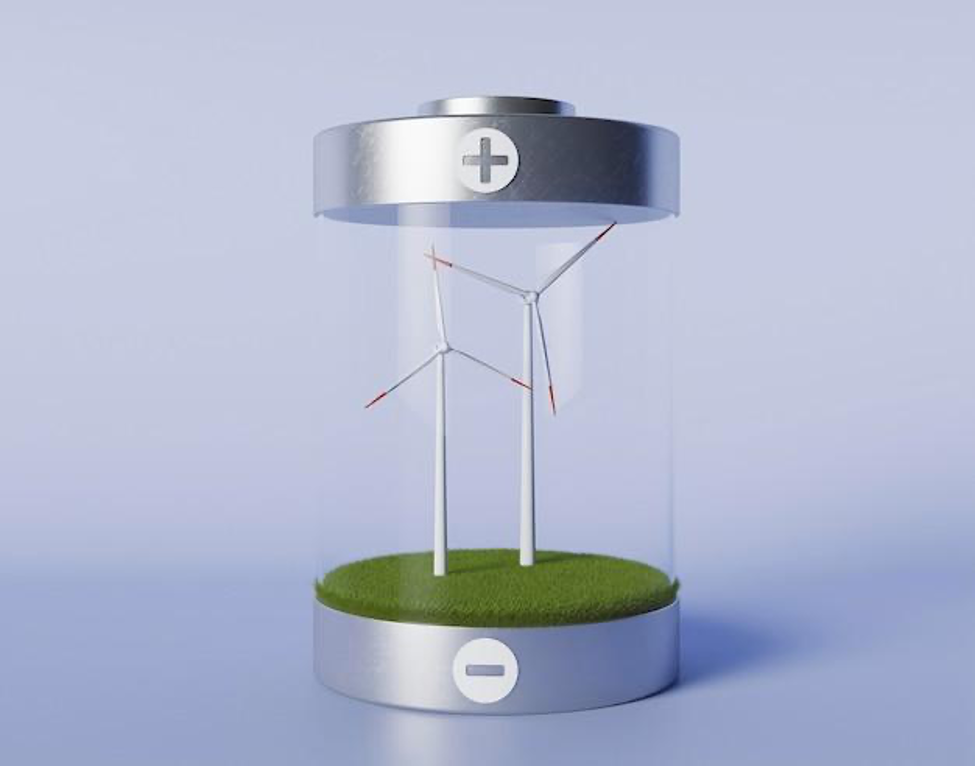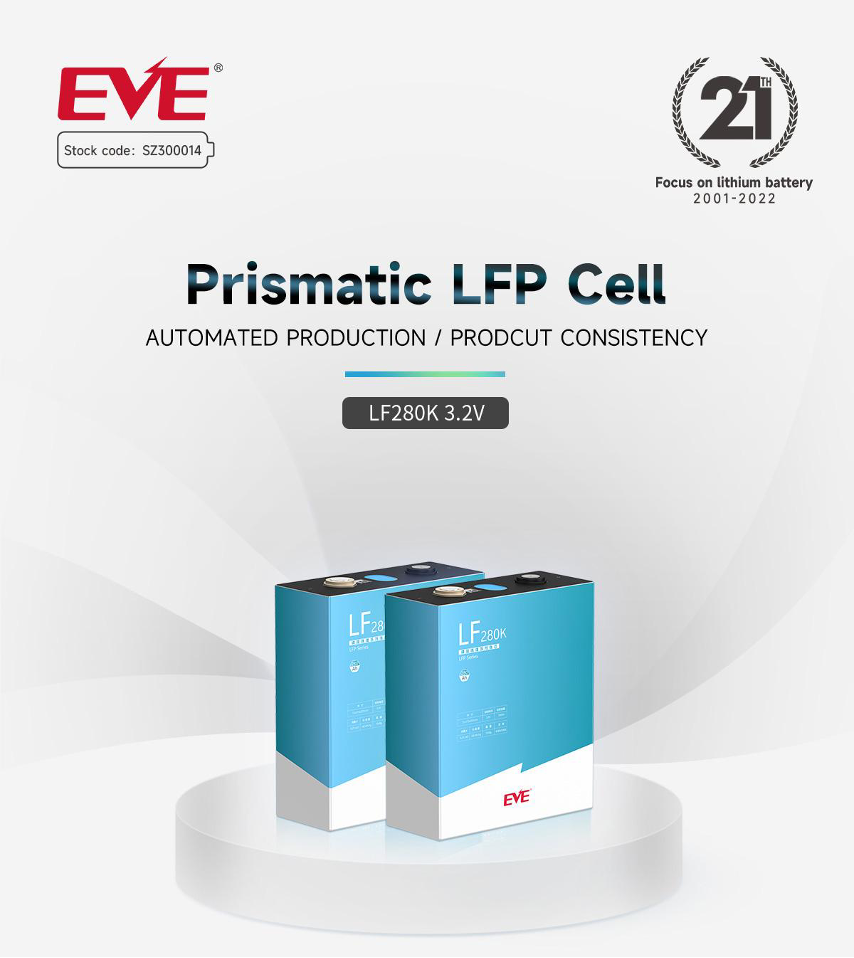
Lead-acid cell batteries and prismatic LiFePO4 batteries are the two most popular types of batteries available on the market. A lead-acid battery uses lead and lead oxide as its electrodes and sulfuric acid as its electrolyte. A prismatic LFP cell battery, on the other hand, is a next-generation battery type that contains three key components: the electrolyte, the carbon cathode, and the graphite anode.
Given their different chemical compositions and properties, the cost and performance of both types also vary. Read on to learn about their key differences so you can determine which one is a more suitable choice for your specific application.
Table of Contents
The Comparison
Both lead-acid and LiFePO4 batteries are effective energy storage solutions but there are many key differences between them in terms of energy density, performance, lifespan, etc. Their difference is apparent in the following aspects:
1. Energy Density
LiFePO4 batteries have a high energy density as compared to lead-acid batteries, as the former can store more energy per unit mass than the later, all thanks to their higher voltage and energy density. Additionally, LiFePO4 batteries have a higher specific power, allowing them to discharge energy faster and deliver more power per unit mass than lead-acid batteries.
Lead-acid batteries, on the other hand, are known for their low energy density compared to other battery chemistries, due in part to their relatively low voltage per cell. This is one of the reasons why lead-acid batteries are typically heavier and bulkier than other types of batteries with similar energy storage capacities.
2. Lifespan
The lifespan of prismatic LFP cell batteries is much higher as compared to lead-acid batteries. The average lifespan of LiFePO4 prismatic cells is 5,000 [1] and LiFePO4 batteries can generally survive up to 10 years or more [2]. On the other hand, lead-acid cells have a limited lifespan with an average of 500 cycles and need to be replaced every 3-5 years [3].
3. Performance
Prismatic LFP cell batteries offer superior performance as compared to lead-acid batteries. Because of its lower internal resistance, you can use a prismatic LiFePO4 battery to its total capacity. Not to mention the rate of charging is also faster. Overall, as compared to lead-acid batteries, LiFePO4 batteries are many times more efficient.
4. Weight
The weight is one of the major drawbacks of lead-acid batteries. These batteries are bulky and hence, need more space. Prismatic LiFePO4 batteries, on the other hand, are lightweight and compact. A prismatic LFP cell battery can be considerably lighter and smaller than a lead-acid battery of the same capacity.
5. Cost
If you consider the cost solely, then lead-acid batteries are cheaper. Prismatic LiFePO4 batteries are costly upfront but when you consider their cost relative to efficiency and power, they are cost-effective in the long-run due to their longer lifespan and increased performance.

6. Environmentally Friendly
Lead-acid batteries are made up of sulfuric acid and lead acid. When you dispose of such a battery, these elements are detrimental to the environment. Prismatic LFP cell batteries, on the other hand, are environmentally friendly because they are composed of recyclable, non-toxic elements.
Which is Better?
Despite of many differences between lead-acid batteries and prismatic LiFePO4 batteries, they are both actively used for various applications. The best battery depends on the specific requirements of the application.
Prismatic LFP cell batteries are a superior choice in terms of performance, efficiency, size, weight, and lifespan. Lead-acid batteries are bulky and hence, they are limited to only heavy applications, such as inverters, automobiles, etc. Prismatic LiFePO4 batteries, however, are available in various capacities and sizes and they are suitable for a wide range of applications, such as solar power, electric vehicles, laptops, etc.
Generally, prismatic LiFePO4 batteries are a better choice for applications that require high energy density, long lifespan, and stable voltage. Lead-acid batteries are a good choice for applications that require low-cost and short-term use.
Conclusion
Overall, both types of batteries have their advantages and applications. The most important thing when it comes to a battery is to buy from a reputed supplier.
Established in 2001, EVE is a seasoned lithium battery manufacturer that specializes in the research and manufacturing of prismatic LFP cell batteries, cylindrical cell batteries, Li-SOCl2 batteries, and more. The products offered by EVE have many advantages such as long cycle life, high capacity, stable voltage, high safety, excellent performance, and more. They are all certified products suitable for a wide variety of applications.
In the prismatic LiFePO4 battery category, EVE LF280K LiFePO4 Rechargeable Battery is a popular choice because of the following characteristics:

- Long lifespan (6,000 cycles)
- Ultra-safe design and consistent build quality with an automated production process
- Wide temperature resistance
- Stable discharge capability
- Certified, environmentally friendly product
- Suitable for a variety of applications, e.g. household ESS, grid ESS, backup system, new energy passenger car, etc.
- Customization available
As a premier lithium battery company, EVE is focused on not just development, but sustainability as well. Join hands with EVE to contribute to green earth!
References:
[1] What Is Lithium Iron Phosphate? Available at:What Is Lithium Iron Phosphate?[2] How long can a LiFePO4 battery last? Available at:
https://www.maxworldpower.com/how-long-can-a-lifepo4-battery-last/#:~:text=The%20lifespan%20of%20LiFePO4%20batteries%20is%20up%20to%20ten%20years,battery’s%20life%20by%20around%2025%25.
[3] Feature of Sealed Lead Acid Batteries? Available at:https://www.power-sonic.com/blog/features-of-sealed-lead-acid-batteries/#:~:text=Sealed%20lead%20acid%20batteries%20can,manufacturing%20process%20of%20the%20battery.